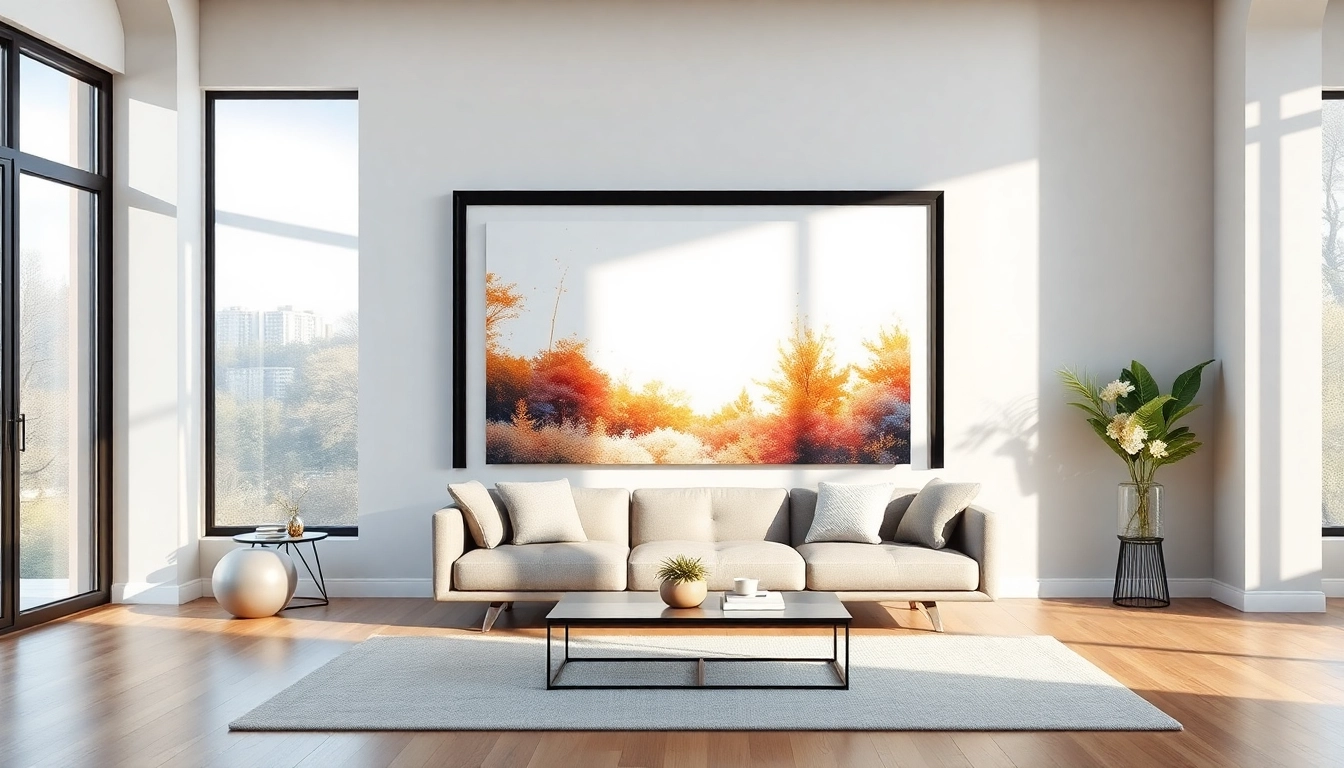
Understanding the 24×36 Frame: Dimensions and Uses
What is a 24×36 Frame?
A 24×36 frame is designed to display artwork, posters, or photographs that measure 24 inches in width and 36 inches in height. This dimension is popular for showcasing larger prints, making it ideal for personal galleries, exhibitions, or home décor. Modern frame designs often come with additional features, such as gallery-ready styles or pre-matted options, allowing for versatile display while protecting your art. The standard size accommodates a range of artwork, ensuring that your prized pieces look their best.
Common Applications for 24×36 Frames
24×36 frames are versatile and can be used in various settings, including:
- Art Exhibitions: Many galleries display large-format art prints or photography in this size, drawing more attention due to its significant presence.
- Home Decor: Perfect for decorating living rooms, bedrooms, or offices, these frames can encapsulate personal photos, prints from local artists, or posters of favorite films.
- Interior Design: Designers often utilize oversize frames as statement pieces, creating focal points on walls and enhancing the overall aesthetic of a space.
- Event Decor: For weddings or parties, customized 24×36 frames can be used for menus, seating charts, or important announcements.
Choosing the Right Material for Your Frame
The material of your 24×36 frame can significantly impact the overall look and durability. Here are common materials:
- Wood: Offers a classic, warm look. Ideal for traditional or rustic home styles.
- Metal: Provides a sleek, modern appearance, perfect for contemporary settings.
- Plastic: Affordable and lightweight, suitable for casual or temporary displays.
When selecting a frame, consider both the artwork you’re displaying and the surrounding decor to find a complementary style.
Design Inspirations for 24×36 Frames
Modern Interiors: Stylish Display Ideas
In modern interiors, the use of a 24×36 frame can contribute to a minimalist aesthetic. Designers suggest using white or black frames against colorful walls to create a stunning contrast that catches the eye. Moreover, opting for a simple matting can enhance the artwork while keeping the overall focus where it belongs.
Utilize grouping techniques by combining 24×36 frames with smaller sizes to create visual interest and dimensions within a gallery wall. This can create a harmonious balance between different pieces, allowing the viewer’s eye to move across the display without overwhelming them.
Creating a Gallery Wall with 24×36 Frames
Creating a gallery wall with 24×36 frames can be an exciting project that showcases everything from family photos to cherished art pieces. Here’s how to achieve a captivating look:
- Select a Focal Point: Start with one central piece. The 24×36 frame can serve as the anchor for your gallery wall.
- Create a Layout: Before hammering nails into the wall, lay the frames on the floor to experiment with arrangements. Consider varying the orientation of your frames, mixing horizontal and vertical placements.
- Consistency is Key: Use frames that have a consistent style or color to unify your display, even if the artwork varies.
Incorporating Color and Texture into Your Display
When adding a 24×36 frame to your space, don’t shy away from color. Bright, bold frames can create a playful vibe, contrasting with neutral backgrounds. Conversely, natural wood tones can bring warmth and richness to minimalist spaces.
Texture is equally important. Consider a frame with a matte finish or textured surface to add dimension. Pairing different frame textures can create a rich tapestry of visual interest, ensuring that your display is not only seen but also felt.
How to Properly Hang and Care for 24×36 Frames
Essential Tools and Techniques for Hanging
Hanging a 24×36 frame requires careful planning. Here are essential tools and techniques:
- Tools Needed: A level, measuring tape, hammer, and wall anchors if necessary.
- Placement: Decide at what height to hang the frame. The general rule is to position the center of art at eye level, roughly 57 to 60 inches from the floor.
- Marking the Wall: Use a pencil to mark the wall where the top and sides of the frame will sit; this ensures accuracy.
Maintenance Tips to Preserve Your Frame
To keep your 24×36 frames looking their best, regular maintenance is key. Dust frames with a soft, dry cloth regularly to prevent buildup. Additionally, if you’re displaying art or photos exposed to sunlight, consider rotating pieces to avoid fading and damage. For frames with glass, ensure you clean with a gentle glass cleaner to maintain clarity without scratches.
Protecting Your Art: Glass vs. Acrylic
When framing artwork, you may choose between glass and acrylic. Here’s a comparison:
- Glass: Provides a clearer view of your art and is scratch-resistant. It’s perfect for higher-end artwork but can be heavy and fragile.
- Acrylic: Lightweight and shatterproof, making it perfect for larger frames like 24×36. However, it can scratch more easily than glass.
Ultimately, the decision should hinge on the nature of the artwork, the environment where it will hang, and personal preferences.
Finding the Perfect 24×36 Frame
Top Retailers for 24×36 Frames
24×36 frame, numerous retailers are renowned for their quality and selection:
- Modern Memory Design: Offers premium options that combine quality and aesthetics.
- Amazon: A wide variety, from budget-friendly to designer options, catering to every taste.
- Target: Provides affordable frames that often include hanging hardware for easy display.
Custom Frame Options: When to Consider Them
In some cases, a custom frame may be the best choice. If your artwork is an unusual size or if you have specific design needs, custom framing allows for personalized selections of material, color, and style. Many professional framers can also offer advice on the best approaches for your unique pieces, including matting and glass selections to enhance your display.
Comparing Prices: Getting the Best Deal
Prices for 24×36 frames can vary significantly depending on material, brand, and design. Here are some tips for getting the best deals:
- Seasonal Sales: Keep an eye out for sales during holiday seasons or clearance events.
- Compare Online and In-Store Prices: Sometimes retailers have different pricing strategies that can work in your favor.
- Discounts for Bulk Orders: If you plan to buy multiple frames, inquire about bulk purchase discounts.
Trends in Picture Framing: What You Need to Know
Emerging Styles and Designs in Framing
Current trends in framing emphasize unique designs such as oversized frames, colored finishes, and minimalist aesthetics that prioritize simplicity and clean lines. Mixed-material frames that combine wood, metal, and acrylic are becoming increasingly popular, allowing for customized displays aligned with individual styles.
The Increasing Popularity of Sustainable Frames
As sustainability takes center stage in decor, eco-friendly frames made from recycled materials or sustainable sources are gaining traction. Many consumers are now seeking out purchases that minimize their environmental impact while accentuating their style.
Framing Technology: Innovations to Look Out For
Technology in framing has evolved, with innovations such as frames that provide UV protection, climate-controlled matte displays, and digital frames that allow for the rotation of multiple images. Incorporating these advancements can enhance the longevity of displayed artwork while appealing to modern consumers’ technology-driven lifestyles.






